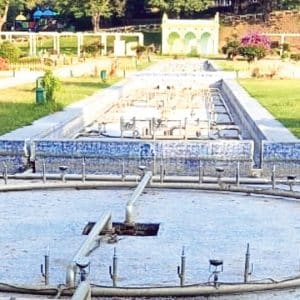Urban development Vs environmental responsibility: Striking a balance
Sir,
As cities expand to accommodate growing populations and economic activities, urban development often requires clearing land, frequently at the cost of cutting down trees. These trees, vital for maintaining ecological balance, become casualties in the race for infrastructure.
However, if city planners implement compensatory afforestation, such as planting 100 trees for every 50 cut, this can seem like a responsible solution. But it also presents a complex environmental dilemma.
Trees in urban areas provide shade, reduce heat, purify air and support biodiversity. Replacing them with trees planted far from the city does not offer the same localised benefits. Moreover, newly planted saplings take years to reach the ecological value of mature trees.
Still, planting trees elsewhere is better than not replacing them at all — something is better than nothing. Eco-conscious planning encourages planting trees along roadsides, in parks and even on rooftops. Green belts and vertical gardens are also gaining popularity.
Government policies now often mandate tree replacement in urban development projects. NGOs and citizen groups are stepping up to monitor, implement and participate in reforestation efforts.
The key lies in balance — smart urban planning, minimal tree loss and sustainable replanting strategies. Development must walk hand-in-hand with environmental care to ensure a liveable future for generations to come.
As citizens, we can play a crucial role in supporting sustainable urban development while protecting the environment. Here’s how we can contribute:
1. Tree plantation drives: Organise and participate in local tree-planting initiatives in parks, schools and community spaces.
2. Awareness campaigns: Educate the public about the importance of trees through workshops, social media and community events.
3. Monitoring projects: Track Government and private development projects to ensure compensatory planting is implemented properly.
4. Policy advocacy: Collaborate with elected representatives and authorities to push for greener urban planning and stronger environmental regulations.
5. Adopt-a-tree initiatives: Encourage citizens to take responsibility for nurturing specific trees in their neighbourhoods.
6. Community green activities: Join hands for rooftop gardening, composting and maintaining green public spaces.
7. Legal action: File legal suits if authorities violate environmental regulations.
8. Partnerships: Collaborate with schools, colleges and corporate groups to expand green initiatives.
Together, NGOs and citizens can be powerful forces in shaping cities that grow sustainably, without sacrificing nature.
— M.S. Harish Shenoy, Trustee and National Treasurer, Youth for Seva , Saraswathipuram, 17.4.2025
You can also mail us your views, opinions, and stories to [email protected]








Recent Comments